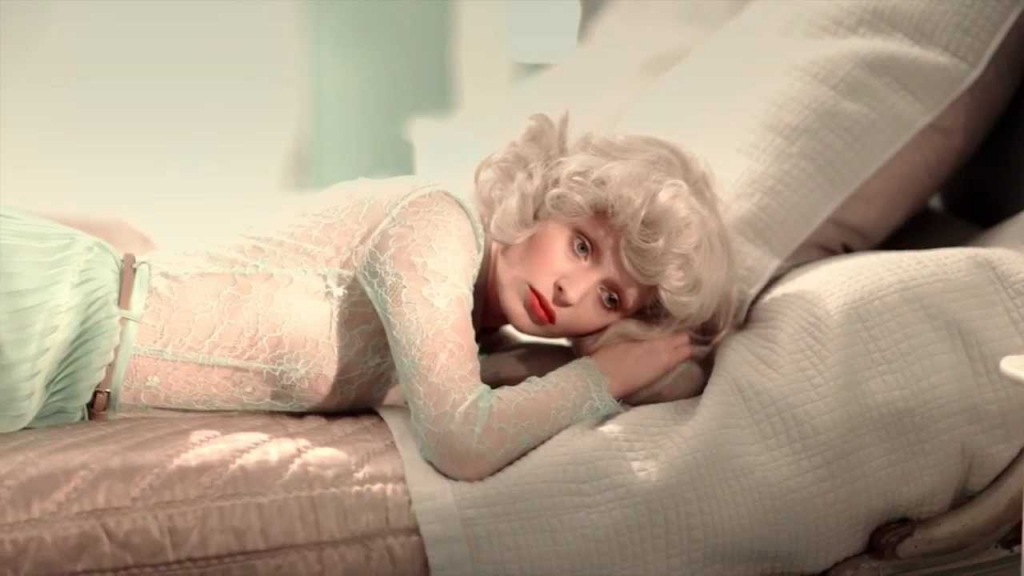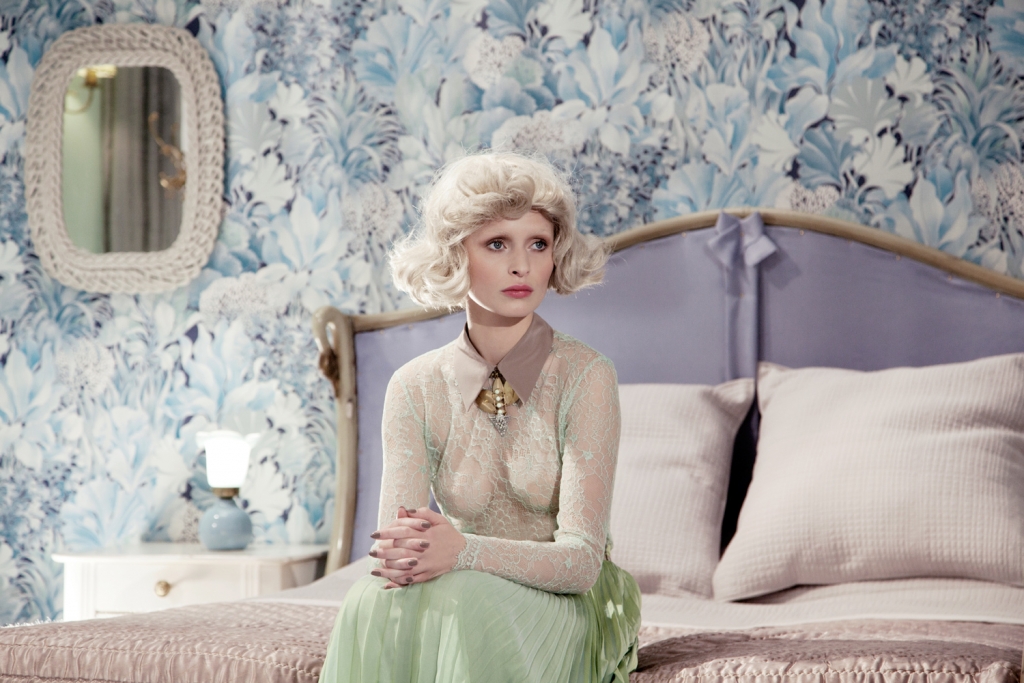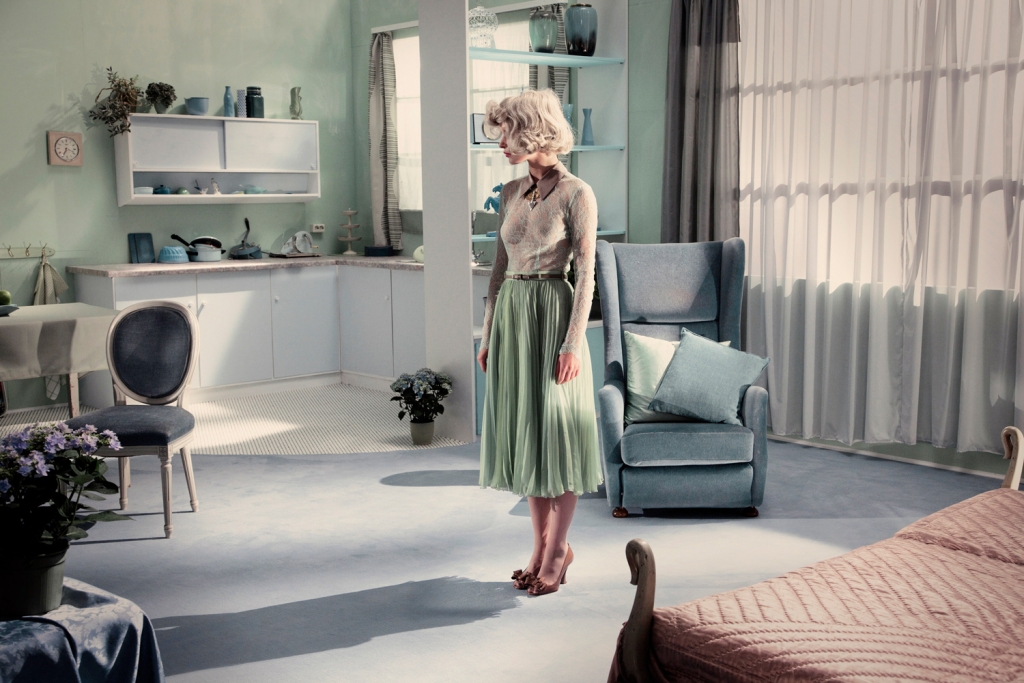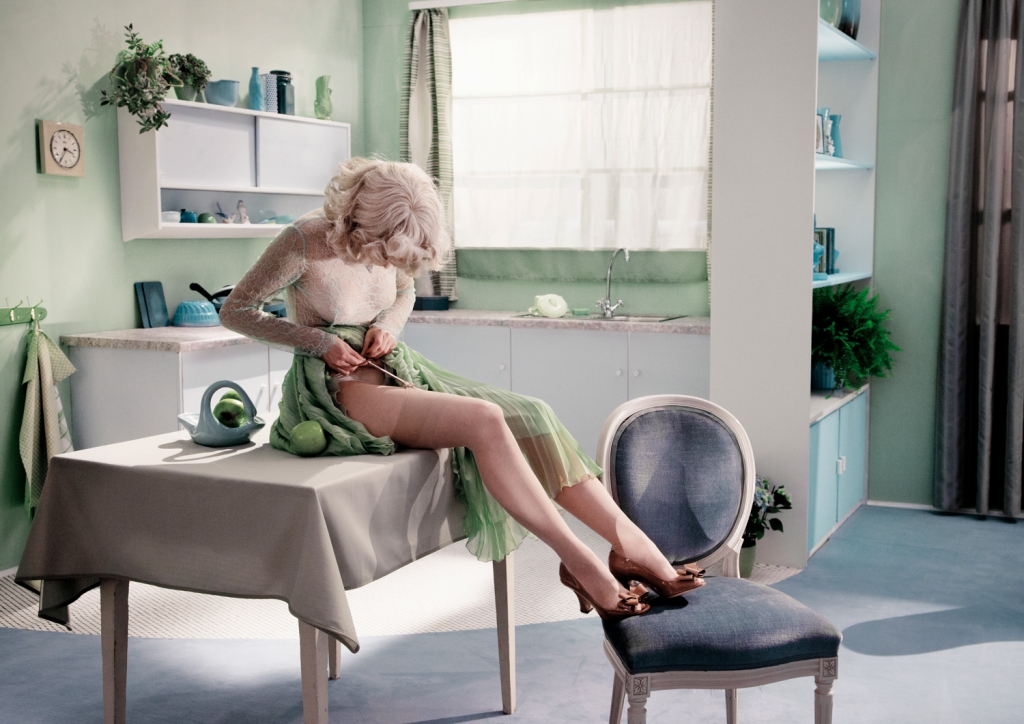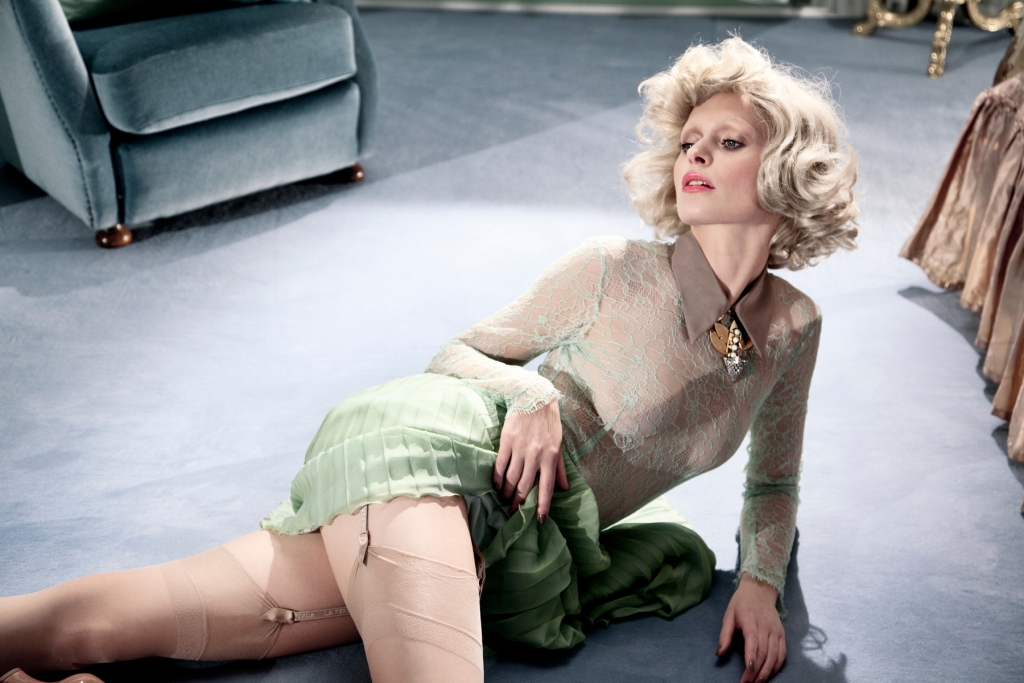Hors D`oeuvre
Interview with Monica Menez
Your style is pretty graphic and expressive, erotic, mostly with an unusual or unexpected humoristic, grotesque twist and sometimes very unusual perspectives? What would you say are your characteristic style elements? What makes you tick? What were the influences that shaped your look?
Two of my most important stylistic elements are humor and surprising elements in the storyline, and that applies especially to my films. Furthermore, each project is characterized by a specific color scheme. These color moods change from project to project, simply because my choice of colors is based on the mood I´m in. Ever since I was a child I had a soft spot for colors. My fascination with colors and their aura has already been strong even before I consciously started to work in the creative field. Just to give you one example: There were times when I only wore clothes with polka-dots or red and black colored clothes. However, these obsessions change time and again: When I am over a certain color, I just move on to the next one that’s intriguing to me. Another important source for my inspiration are old films – I really like the composition of colors in these movies. Last but not least I enjoy everything that’s a bit off the norm, strange, odd and whimsical. The sources of my inspiration are multifaceted – it could be a specific color, a certain age in history, you name it. It is not something that’s predictable really, and so I keep surprising myself.
When it comes to film, you seem to even sharpen this approach. Are you more a photographer or director today? Or are the genres in your opinion somewhat fluent nowadays?
I would not consider myself as this or that. I intend to keep all my options open, instead of limiting myself artistically. At the moment, I tend to do more photo shoots – but that does not mean that fashion film has lost its importance in my body of work. It always depends on the projects I am working on, or more importantly: It has to feel right. One example: I never intended to make a music video, but I ended up filming one for a German band called „The Orsons“ because we shared artistic views. In other words: I am generally up for anything. The entire scene is changing rapidly due to the influence of social media and the development of technology. This is a great time for me as an artist: I feel that I can and want to try out all kinds of different things. What really interests me right now are short moving images.
How does film relate to photography for you?
When it comes to making a film I focus on the storytelling and on the location, whereas my photos are more reduced in their look. Instead of storytelling, I put the emphasis on creating a visually enthralling image.
Many of your multi-award-winning fashion films like Odditory, Bello, The Journey or Hors d´Oeuvre, just to name a few, do have a very expressive storyline, in which fashion becomes more of an accessory. How do your clients work with those films?
Fashion is always the starting point when I work on a film, and fashion also determines the look of the entire project. But since storytelling is very important to me, fashion and story have to be well balanced. My clients are aware of the fact that I won´t provide them with a standard image film about their brand, so they trust me and my artistic vision. They can be assured that their brand will be embedded into an exciting story which puts their product into new perspectives – and thus will (hopefully!) stick in the minds of the viewers and customers. Since it’s an artistic work with a storyline rather than a promotional clip, my films can stand the test of time because they are not bound to a certain zeitgeist.
Your work radiates always a very special erotism. In what way does this distinguish you from other photographers and how would you say with “women” as a subject in your images and films?
It is not so much about eroticism really, but rather about how female characters interact with each other. I love to play with stereotypes by implementing themes like jealousy, and how strong women play little nasty tricks on each other. Eroticism is something that I add on a playful level, but it is by no means an element that I focus on excessively.
Where do you source the talent for your work. It seems that you do not work with pro models as often? Why?
Having a storyline in my fashion films is essential – and that is why I need models that don’t just look stunning, but are also capable of acting and dancing. That is also why I prefer to work with dancers since they possess incredible possibilities of expression. Professional models often don’t have these skills, and many of them cannot play an entire scene from beginning to end.
Your films and photography do have a distinct styling. How do you deal with styling? Do you have a fixed team?
Before I start working on a new project, I already have everything visualized precisely in my mind: I know what the model will wear from head to toe, and I know what the scenery should look like. That is why I am very hands-on when it comes to styling. I have a fixed team that I work with very closely, and that includes all aspects of style. We choose every stylistic element that appears in my film or on my photos. Every single piece – no matter if it’s shoes, the color of the flowers or the shape of the curtains – is determined in advance, so that there are no surprises on the set.
You are based in Stuttgart, but you seem to work a lot lot for clients outside Germany? How is that related?
I live in Stuttgart by chance, not because I chose this place deliberately – but I enjoy living here. My place of residence is not crucial for my work as a fashion photographer and filmmaker though. My potential clients will find me no matter where I live – and they always have so far!
